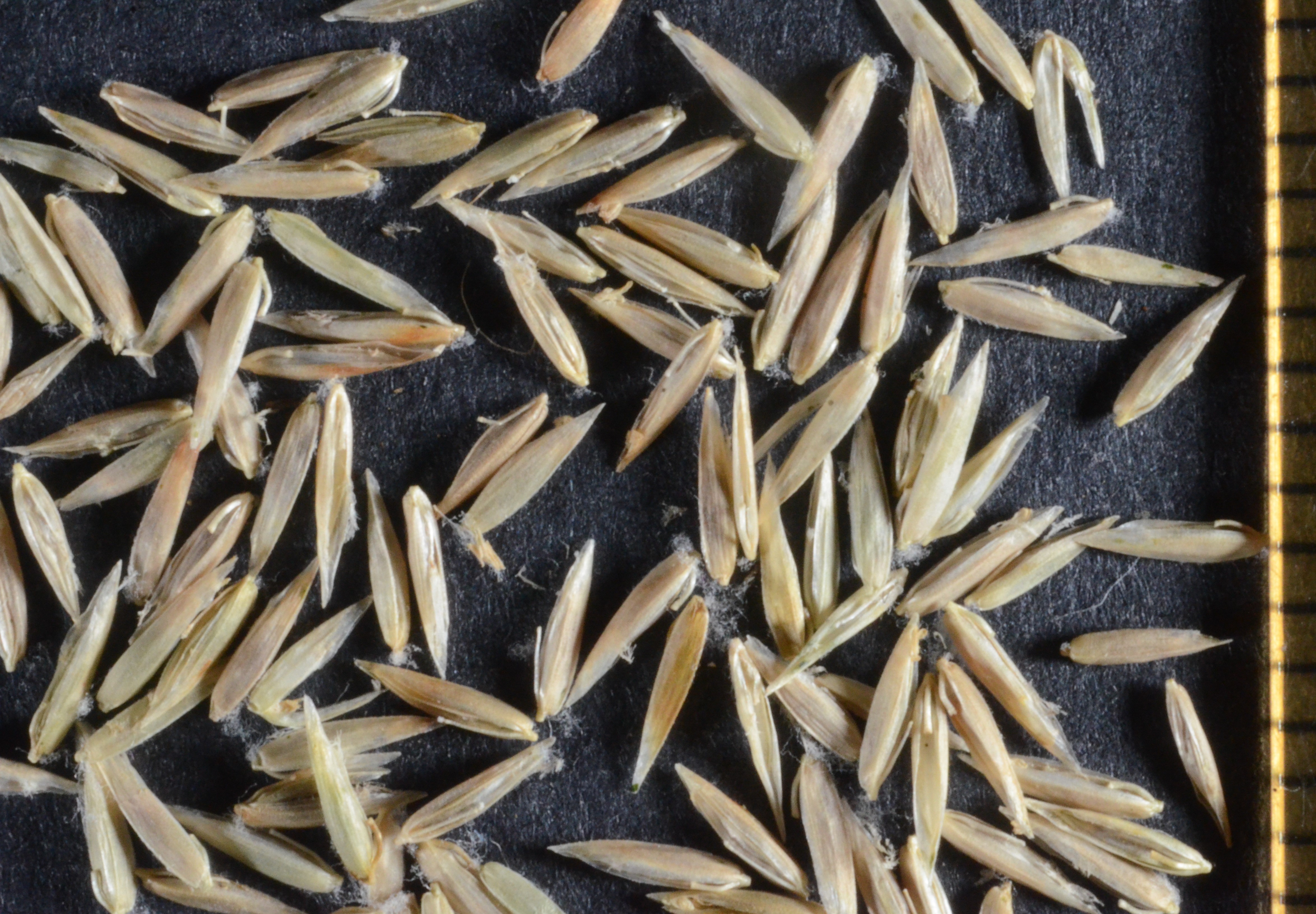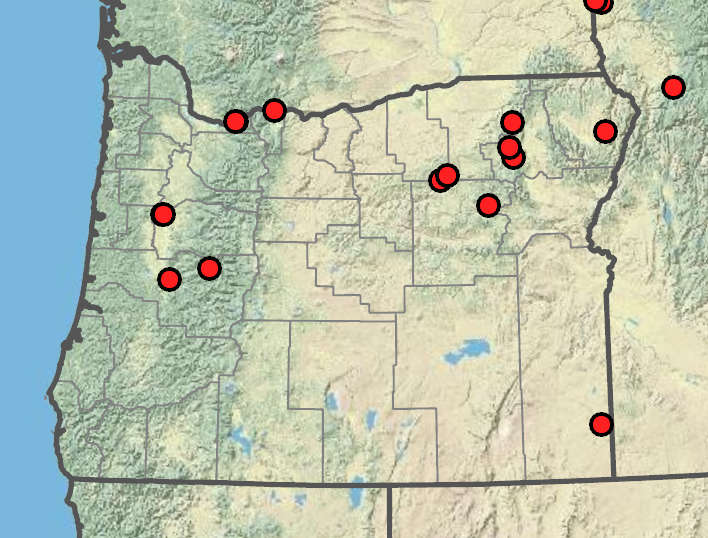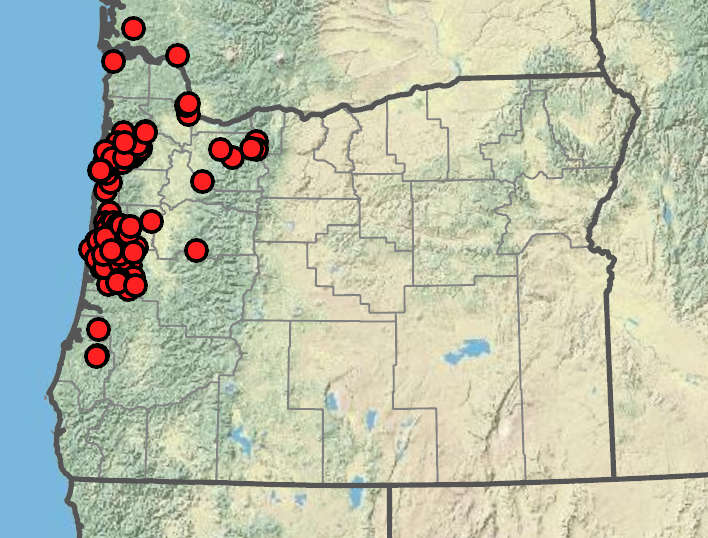Poa nemoralis
Poa laxiflora
wood bluegrass, woodland bluegrass
looseflower bluegrass
nodes slightly compressed, 2–5 exserted; the uppermost node in upper 25–50% of culm.
retrorsely scabrous.
intraor extravaginal or mostly extravaginal.
extravaginal.
sheaths closed to 20% of their length, bases of basal sheaths glabrous;
ligules 0.2– 0.8(1)mm long, truncate;
blades mostly flat, 0.8–3 mm wide.
sheaths closed 25–50% of their length, retrorsely scabrous;
ligules 2–3.5 mm;
blades flat, 3–8 mm wide.
narrowly lanceoloid to ovoid, generally 25–40% as broad as long at maturity; erect, or nodding in shade forms, sparsely to moderately congested, 7–16(20) cm long;
branches ascending to widely spreading, 2–5 per node, fairly straight.
open; sparse, 14–30 cm;
branches widely spreading, fairly straight; (5.5)8–12(15)cm, 1–3(4) per node, antrorsely scabrous, with 3–13 spikelets.
narrowly lanceolate to lanceolate; to 2.5–3.5 times as long as wide, 3–8 mm, usually not glaucous;
florets (1)2–5;
rachilla internodes mostly less than 1 mm.
4–8 mm;
florets 2–4;
rachilla internodes about 1 mm long.
tapering from the base or narrowly lanceolate;
keels smooth or sparsely scabrous;
lower glumes 3-veined, 6.4–11 times as long as wide;
upper glumes shorter than or subequal to lowest lemma.
keels scabrous;
lower glumes lanceolate, 3-veined but margins tending to roll up, often concealing the marginal veins and appearing 1-veined;
upper glumes shorter than or subequal to the lowest lemma.
with sparse, often short; cobwebby hairs.
with cobwebby hairs.
narrowly lanceolate to lanceolate, 2.4–4 mm; lower lemmas less than 20% as wide as long, distinctly keeled;
keels and marginal veins short-villous, intermediate veins glabrous; area between veins smooth or muriculate, glabrous;
tips acute, usually bronzecolored in part.
lanceolate, 3.2–6 mm, distinctly keeled; smooth or sparsely finely scabrous;
keels longvillous to 67–75% of their length; marginal vein hairs sparse, intermediate veins usually glabrous, rarely sparsely puberulent, glabrous between the veins;
tips acute.
0.8–1.9 mm.
0.5–1.1 mm.
=28, 42.
Poa nemoralis
Poa laxiflora
Moist, low elevation forests, streamsides, meadows. 50– 2000m. BW, Casc, ECas, WV. CA, WA; throughout most of North America; Eurasia. Exotic.
Poa nemoralis is a cespitose forest grass with short ligules and mostly open leaf sheaths. Similar P. interior has been reported from Oregon, but its presence here has not been confirmed. It has longer ligules and wider glumes and lemmas. Poa palustris has a more spreading growth form, culms branched above the base, well-developed callus hairs, narrow hyaline lemma margins, and incurving lemma keels.
Moist, shady, riparian terraces in conifer forests. 0–1100m. Casc, CR, Est, WV. WA; north to AK. Native.
Poa laxiflora has an extremely open panicle with spreading, nodding branches. In P. marcida, the entire inflorescence nods, but the branches parallel the inflorescence axis, and the lemmas taper more gradually. Poa nervosa has shorter panicles, usually glabrous calluses, and longer anthers. Poa leptocoma, usually found at higher, more eastern sites, has one-veined lower glumes and a more erect inflorescence.
Rob Soreng, Barbara Wilson, Richard Brainerd, Nick Otting
Rob Soreng, Barbara Wilson, Richard Brainerd, Nick Otting
- Local floras:
BC,
CA,
OR,
WA
- Local Web sites:
CalFlora,
CalPhotos,
Flora NW,
PNW Herbaria
WildflowerSearch
iNaturalist (observations)
USDA Plants Database
- LBJ Wildflower Center
- SEINet
- Plants of the World Online
- Encyclopedia of Life
- Wikipedia
- Google Image Search
- Local floras:
BC,
OR,
WA
- Local Web sites:
Flora NW,
PNW Herbaria
WildflowerSearch
iNaturalist (observations)
USDA Plants Database
- LBJ Wildflower Center
- SEINet
- Plants of the World Online
- Encyclopedia of Life
- Wikipedia
- Google Image Search




